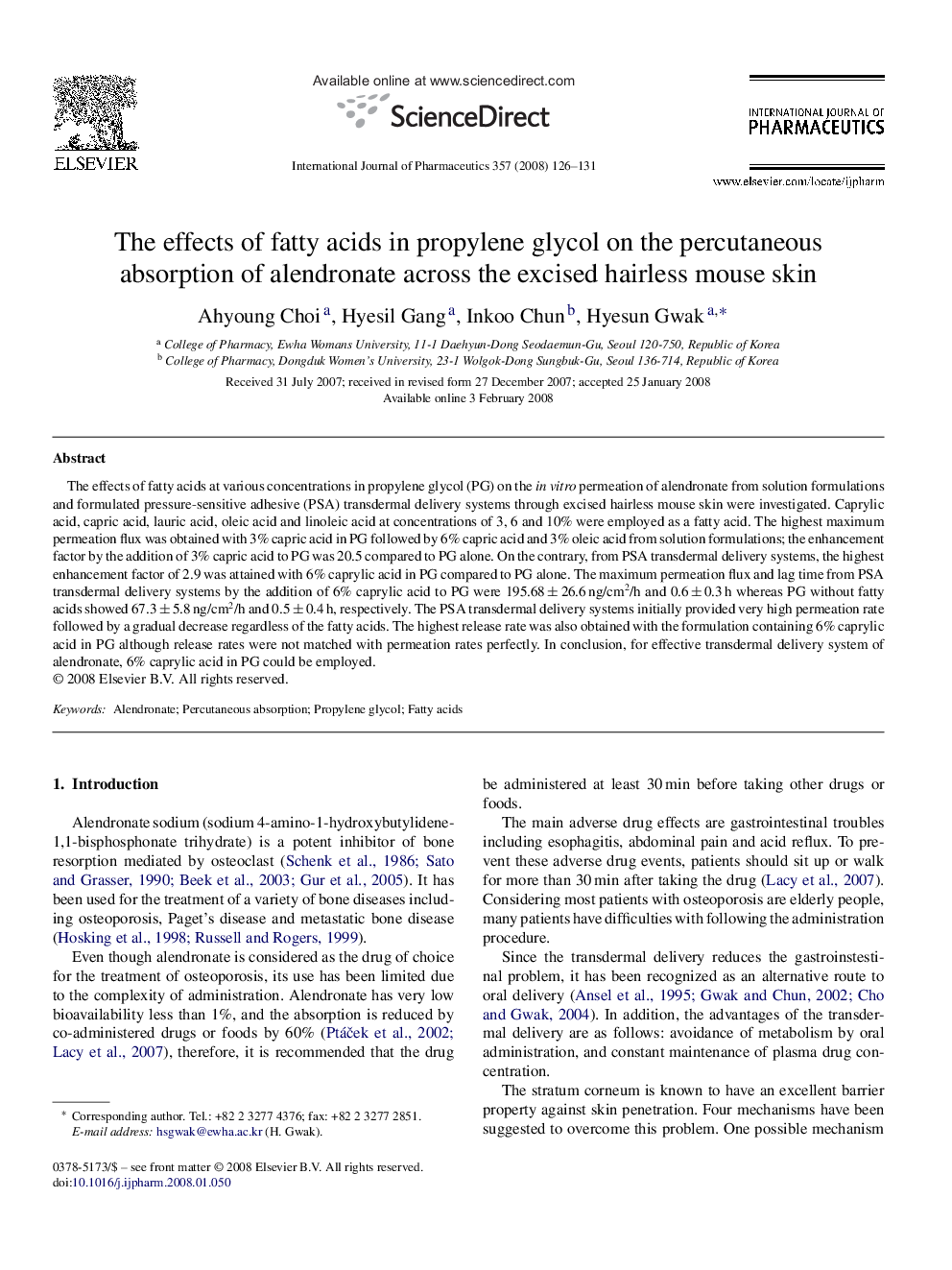| کد مقاله | کد نشریه | سال انتشار | مقاله انگلیسی | نسخه تمام متن |
|---|---|---|---|---|
| 2505301 | 1557489 | 2008 | 6 صفحه PDF | دانلود رایگان |

The effects of fatty acids at various concentrations in propylene glycol (PG) on the in vitro permeation of alendronate from solution formulations and formulated pressure-sensitive adhesive (PSA) transdermal delivery systems through excised hairless mouse skin were investigated. Caprylic acid, capric acid, lauric acid, oleic acid and linoleic acid at concentrations of 3, 6 and 10% were employed as a fatty acid. The highest maximum permeation flux was obtained with 3% capric acid in PG followed by 6% capric acid and 3% oleic acid from solution formulations; the enhancement factor by the addition of 3% capric acid to PG was 20.5 compared to PG alone. On the contrary, from PSA transdermal delivery systems, the highest enhancement factor of 2.9 was attained with 6% caprylic acid in PG compared to PG alone. The maximum permeation flux and lag time from PSA transdermal delivery systems by the addition of 6% caprylic acid to PG were 195.68 ± 26.6 ng/cm2/h and 0.6 ± 0.3 h whereas PG without fatty acids showed 67.3 ± 5.8 ng/cm2/h and 0.5 ± 0.4 h, respectively. The PSA transdermal delivery systems initially provided very high permeation rate followed by a gradual decrease regardless of the fatty acids. The highest release rate was also obtained with the formulation containing 6% caprylic acid in PG although release rates were not matched with permeation rates perfectly. In conclusion, for effective transdermal delivery system of alendronate, 6% caprylic acid in PG could be employed.
Journal: International Journal of Pharmaceutics - Volume 357, Issues 1–2, 5 June 2008, Pages 126–131